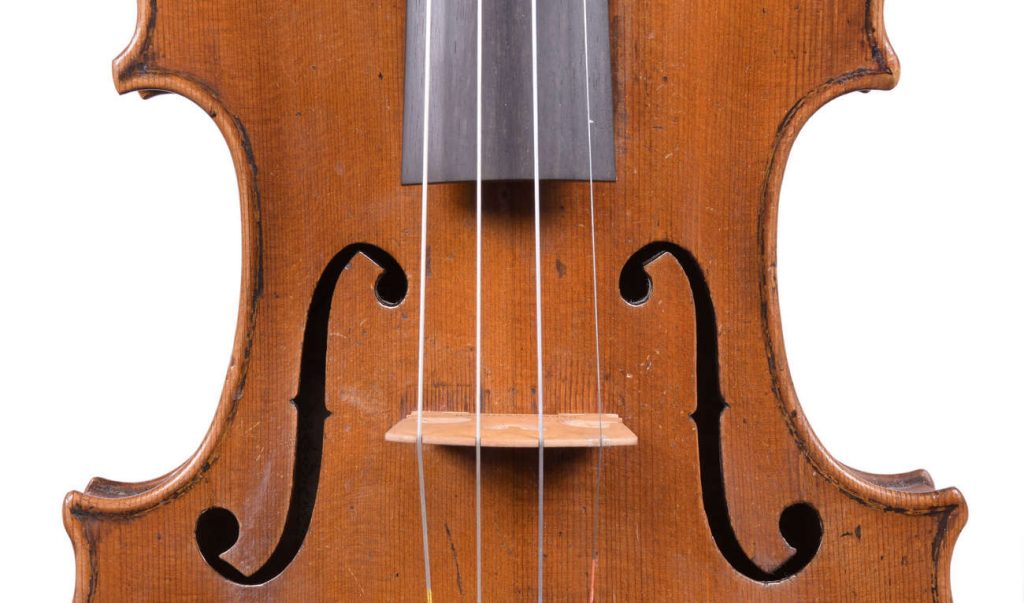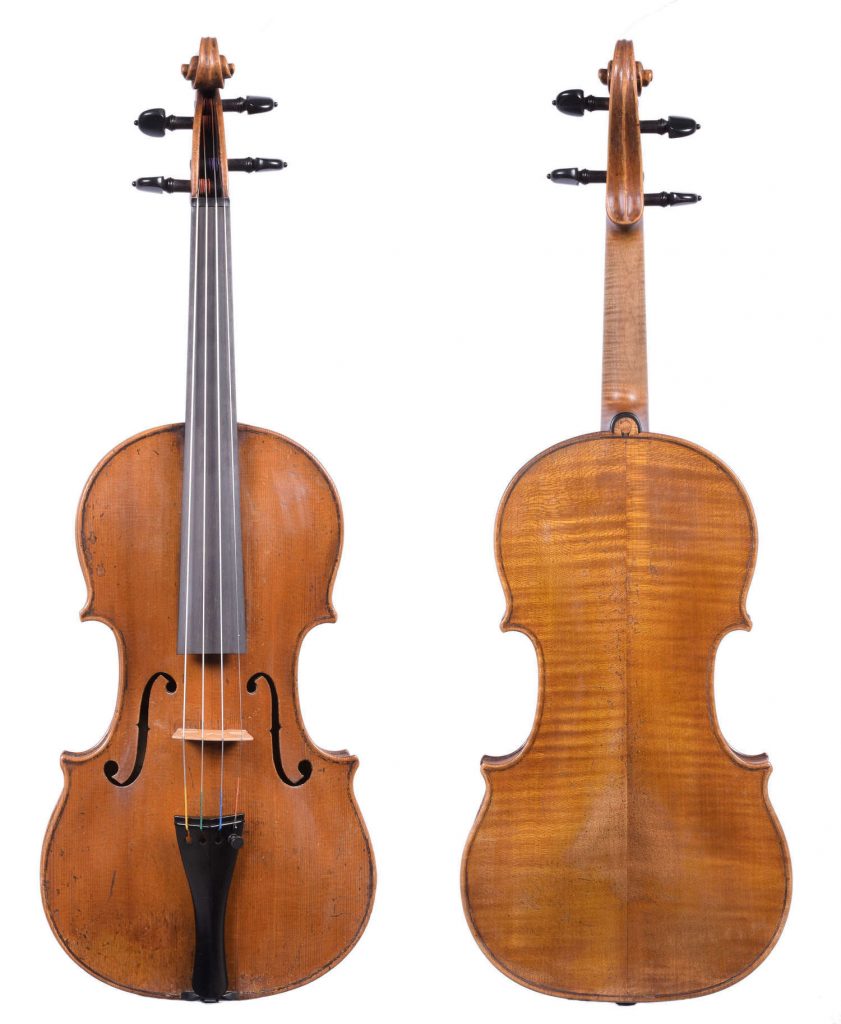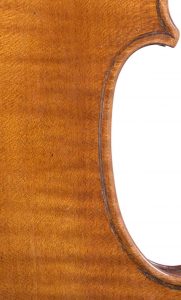
A Giuseppe Gagliano Violin, 1780
With no fewer than twelve Gagliano makers spanning approximately 150 years and five generations, the Gagliano name has become synonymous with violin making in Naples. Giuseppe Gagliano (1742-1820), a member of the third generation of the Gagliano family, was the son and pupil of Nicolo Gagliano (c.1710-1787). One of four brothers, Giuseppe most certainly had a hand in some of Nicolo’s instruments and at its best, his work is on par with his father’s. However, the quality of his output varied, and less careful work is evident in some of the later productions made in collaboration with his brother Antonio (1764-1835).
The violin pictured here is representative of Giuseppe’s very best work and fortunately, comes to us some 240 years after it was built in a nearly unblemished state of preservation. The materials and workmanship are of the highest quality and the instrument is covered with a lovely transparent, golden-orange varnish. The bold and practical design is striking; rounded upper bouts give the instrument a pleasing appearance and make it easy for the player to navigate. The strong outline, f-holes with their broad wings and upright placement on the table, and the broad, powerful arch of the violin all show a well-conceived allegiance to Stradivari ideals rather than to Amati or Stainer, who were the other makers often emulated in the late 18th century.
Perhaps more than any other region in Italy, Naples has seen little evolution in its style of violin making. This is probably due to a long tradition of Neapolitan makers copying the work of their predecessors. Consequently violin making in Naples has developed into a distinctive school with its own idiosyncratic features and mannerisms that have been imitated for generations. The scroll on this violin is typical of not only Giuseppe’s work but other Neapolitan makers as well, with a small, tightly wound volute on top of a long pegbox and a deeply carved throat. The peghole placement – two pairs set far apart – is also a common and distinctive trait of Neapolitan scrolls.
Like the scroll, the purfling on this violin is also typical of Neapolitan work and quite distinct from that of other regions of Italy, with the use of a fibrous paper-like material for the black strips of the purfling. As the purfling expands out of the channel and cracks the varnish, the black strips have a somewhat faded, flaky look like an old, crumbling piece of paper. The linings and inner strips of the purfling are made from beechwood, which was commonly used by the Neapolitan makers.
The exceptional quality of this violin is affirmed by the excellent artistic utility it continues to provide. This is consistent with many instruments made by the Gaglianos, especially those made in the 18th century. Giuseppe Gagliano’s work represents a bridge between this very fine output from the Gaglianos of the 18th century and a generally more humble level of production after 1800. This instrument confirms that at his best Giuseppe deserves a place among the top names of the Gagliano family.




